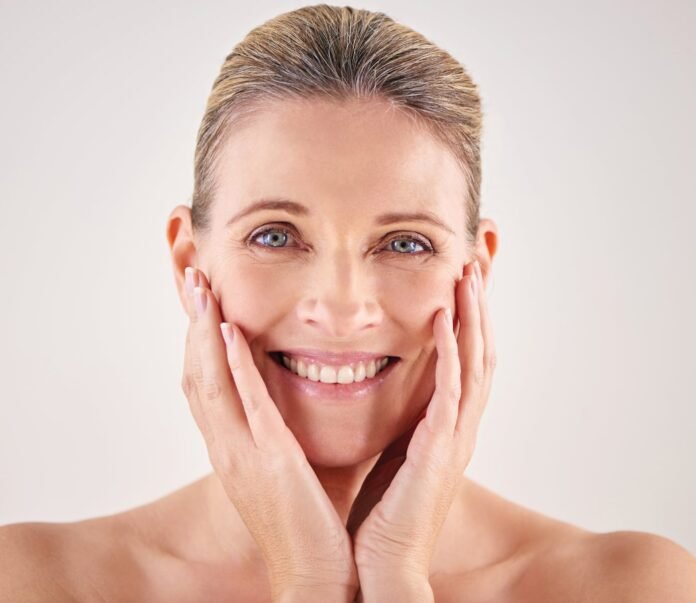Dr. Ajay Rana, a dermatologist, aesthetic physician, and founder director of ILAMED, emphasizes that subtle changes in facial features or skin condition can serve as external indicators of internal health problems. Did you know that your face can reveal a lot about your overall health? From changes in skin colour and texture to the appearance of new lines or spots, these signs might be more than just cosmetic concerns.
Dr. Jaban Moore DC talks about this in his latest reel. He mentions some common yet overlooked symptoms on your face that can indicate serious health problems. “Just because these symptoms could be considered common, doesn’t mean they are normal by any means… they could be signs that something bigger is happening within your body!” he captions the post.
Skin discoloration can be a significant sign. Yellowish skin or eyes, for example, might indicate jaundice, a condition often related to liver problems. Pale or ashen skin can suggest anemia, which points to a lack of healthy red blood cells.
Dr. Rana also notes that persistent redness might indicate rosacea, an inflammatory skin condition, or could be a sign of other underlying issues such as lupus, an autoimmune disease.
Additionally, the appearance of dark circles under the eyes can be more than just a sign of fatigue. They might indicate allergies, eczema, or even an iron deficiency. Swollen or puffy eyelids, especially in the morning, can be related to kidney problems or a thyroid disorder.
The texture of the skin also tells a story. Dry, flaky skin might not just be due to a lack of moisture but could indicate hypothyroidism, where the thyroid gland is underactive. Oily skin with persistent acne, particularly in adult women, might suggest a hormonal imbalance, such as polycystic ovary syndrome (PCOS).
Lines and wrinkles, although a natural part of aging, can sometimes hint at dehydration or a diet lacking essential nutrients. Similarly, the sudden appearance of new moles or changes in existing ones should never be ignored, as they could be early signs of skin cancer.
Paying attention to these facial signs is crucial because they can provide early warnings of health issues that might not yet have other symptoms. Consulting a healthcare professional when you notice unusual changes can lead to early diagnosis and better management of potential health conditions. Your face might just be a window to your overall health, offering clues that warrant closer attention.
Changes in the eyes can also reveal health issues. Dr. Rana highlights that blurred vision or the presence of floaters might indicate high blood pressure or diabetes. Additionally, yellowish bumps around the eyes, known as xanthelasma, can be a sign of high cholesterol levels, which might necessitate a lipid profile test.
Lip conditions offer another area to watch. Chapped lips can be more than just a nuisance; persistent dryness and cracking at the corners of the mouth can suggest a deficiency in essential vitamins such as B vitamins and zinc. Similarly, pale lips might point to anemia, while bluish lips can indicate respiratory or cardiovascular problems.
Moreover, the condition of your gums and teeth is a significant indicator of your overall health. Bleeding gums could be a sign of gingivitis, which if left untreated can lead to more severe periodontal diseases. Additionally, it can be a symptom of vitamin deficiencies or even diabetes. Bad breath, while often attributed to poor oral hygiene, might also indicate digestive issues or infections.
Facial hair patterns, particularly in women, can be telling. Excessive facial hair growth, known as hirsutism, can signal hormonal imbalances such as those seen in PCOS or adrenal gland disorders. Conversely, a sudden loss of eyebrows, especially the outer third, can indicate thyroid dysfunction.
Furthermore, the condition of your nails can reflect your internal health. For example, spoon-shaped nails, or koilonychia, can be a sign of iron deficiency anemia. Pitted nails can indicate psoriasis or alopecia areata, while yellow nails might suggest respiratory conditions like chronic bronchitis.
Observing these signs can prompt timely medical consultation, potentially catching diseases in their early stages. Dermatologist Dr. Ajay Rana and Dr. Jaban Moore agree that while these symptoms might seem minor, they could be early indicators of significant health issues. Regular check-ups and not ignoring these signs can lead to early diagnosis and effective treatment, ensuring better health outcomes.

